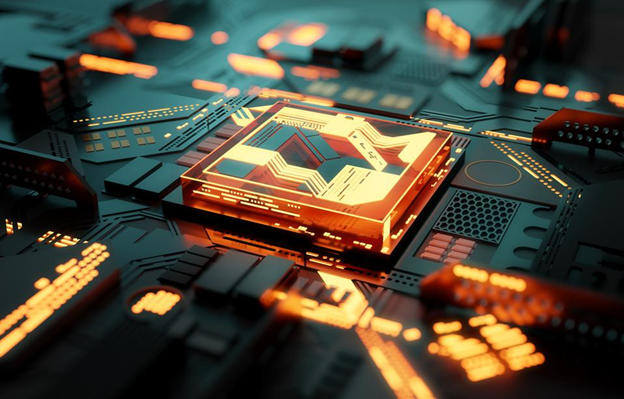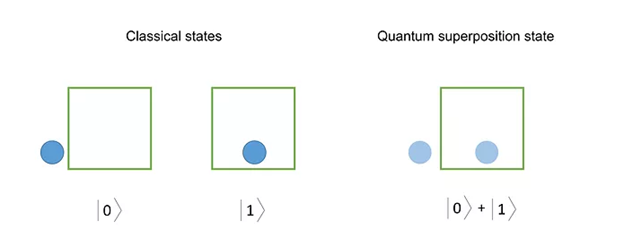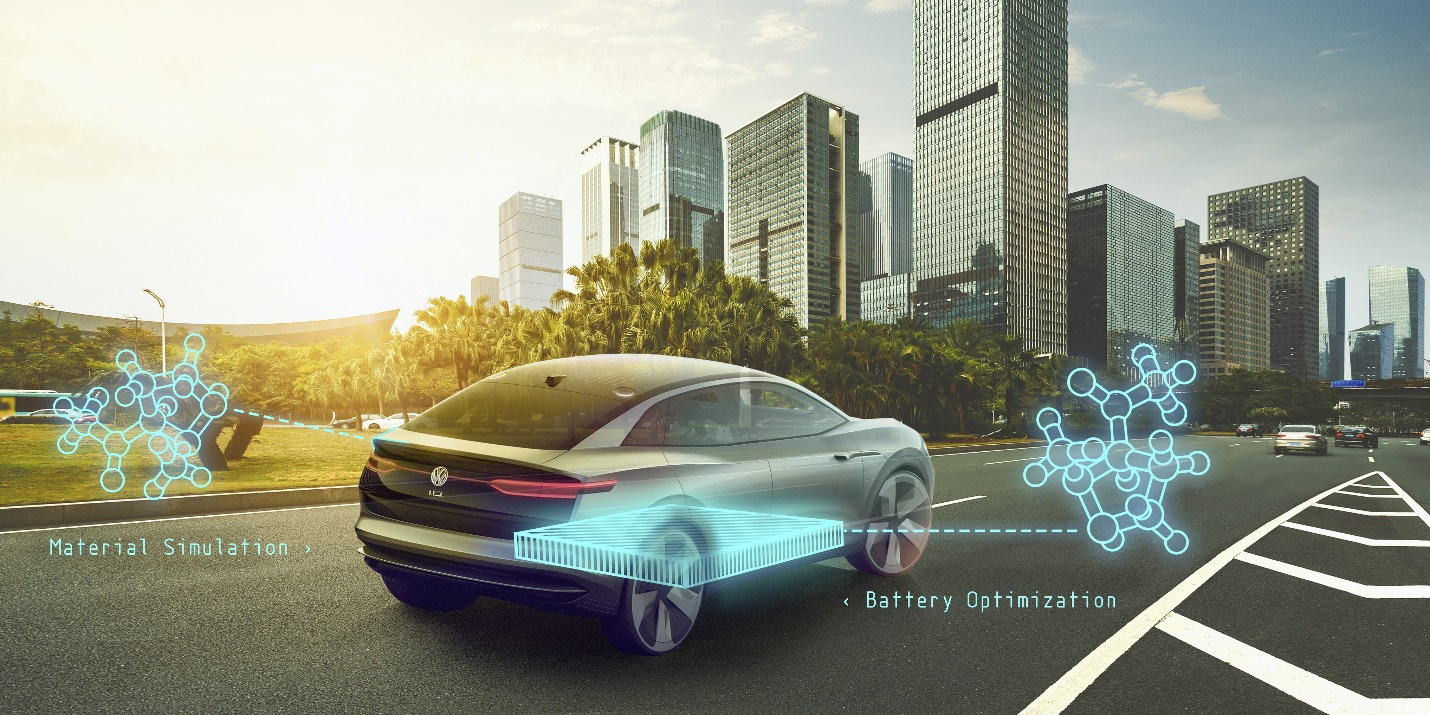Since you’re paying $6 a gallon for gas at your local pump, you already know this. But I’ll say it anyway: The world is facing a massive energy crisis.
What you may not know, though, is that one technology holds the key to solving it.
It could dramatically reduce gas prices and help the world wean off its dependence on fossil fuels. And it could enable the U.S. and Europe to achieve true energy independence.
Indeed, this technology could fundamentally reshape the world’s multi-trillion-dollar energy industry. And in so doing, it will mint its early backers’ small fortunes.
The name of the technology? Quantum Computing.
I’ll start by saying that the underlying physics of this breakthrough — quantum mechanics — is highly complex. It would likely require over 500 pages to fully understand.
But, alas, here’s my best job at making a Cliff’s Notes version in 500 words instead.
For centuries, scientists have developed, tested, and validated the laws of the physical world, known as classical mechanics. These scientifically explain how and why things work, where they come from, so on and so forth.
But in 1897, J.J. Thomson discovered the electron. And he unveiled a new, subatomic world of super-small things that didn’t obey the laws of classical mechanics… at all. Instead, they obeyed their own set of rules, which have since become known as quantum mechanics.
What Is Quantum Computing?
The rules of quantum mechanics differ from that of classical mechanics in two very weird, almost-magical ways.
First, in classical mechanics, objects are in one place at one time. You are either at the store or at home, not both.
But in quantum mechanics, subatomic particles can theoretically exist in multiple places at once before they’re observed. A single subatomic particle can exist in point A and point B at the same time until we observe it. And at that point, it only exists at either point A or point B.
So, the true “location” of a subatomic particle is some combination of all its possible positions.
This is called quantum superposition.
Second, in classical mechanics, objects can only “work” with things that are also “real.” You can’t use an imaginary friend to help move the couch. You need a real friend instead.
But in quantum mechanics, all those probabilistic states of subatomic particles are not independent. They’re entangled. That is, if we know something about the probabilistic positioning of one subatomic particle, then we know something about the probabilistic positioning of another. That means these already super-complex particles can actually work together to create a super-complex ecosystem.
This is called quantum entanglement.
So, in short, subatomic particles can theoretically have multiple probabilistic states at once. And all those probabilistic states can work together — again, all at once — to accomplish some task.
Pretty wild, right?
It goes against everything classical mechanics taught us about the world. It goes against common sense. But it’s true. It’s real. And now, for the first time ever, we’re learning how to harness this unique phenomenon to change everything about everything…
Indeed, quantum mechanics will change everything over the next few years. And some investors will make a lot of money.
Quantum Computing Will Change the World
The study of quantum theory has led to huge advancements over the past century. That’s especially true over the past decade. Scientists at leading tech companies have started to figure out how to harness the power of quantum mechanics to make a new generation of super quantum computers. And they’re infinitely faster and more powerful than even today’s fastest supercomputers.
Again, the physics behind quantum computers is highly complex. But once again, here’s my Cliff’s Notes version.
Today’s computers are built on top of the laws of classical mechanics. That is, they store information on what are called bits, which can store data binarily as either “1” or “0.”
But what if you could turn those classical bits into quantum bits – qubits – to leverage superpositioning to be both “1” and “0” stores at once?
Further, what if you could leverage entanglement and have all multi-state qubits work together to solve computationally taxing problems?
Theoretically, you’d create a machine with so much computational power that it would make today’s most advanced supercomputers seem ancient.
That’s exactly what’s happening today.
The Possibilities Behind Quantum Computing
Google has built a quantum computer that’s about 158 million times faster than the world’s fastest supercomputer.
That’s not hyperbole. That’s a real number.
Imagine the possibilities behind a new set of quantum computers 158 million times faster than even today’s fastest computers…
We’d finally have the level of AI that you see in movies. The biggest limitation to AI today is the robustness of machine learning algorithms, which are constrained by supercomputing capacity. Expand that capacity, and you get infinitely improved machine learning algos and infinitely smarter AI.
We could eradicate disease. We already have tools like gene editing. But its effectiveness relies of the robustness of the underlying computing capacity to identify, target, insert, cut, and repair genes. Insert quantum computing capacity, and all that happens without error in seconds — allowing us to fix anything about anyone.
We could finally have that million-mile EV. We can only improve batteries if we can test them. And we can only test them in the real world so much. Therefore, the key to unlocking a million-mile battery is through simulation. And the quickness and effectiveness of simulations rest upon the robustness of underlying computing capacity. Make that capacity 158 million times bigger, and cellular simulation will happen 158 million times faster.
The economic opportunities here are truly endless.
Solving Today’s Problems
An issue I have with emerging technological breakthroughs is that they’re usually focused on solving tomorrow’s problems. And we need tools to solve today’s problems.
But quantum computing doesn’t have that focus. Instead, it could prove mission-critical in helping us solve today’s problems.
Let’s revisit the making of a million-mile EV.
We’re amid a global energy crisis defined by soaring oil prices. As a result, we’re all paying $6-plus per gallon for gas. That’s unreal. And it’s hurting everyone.
Of course, the ultimate “fix” is for everyone to buy electric vehicles. But EVs are technologically limited today. On average, they max out at about 250 miles of driving range. And they’re also pretty expensive.
Quantum computing could change that. It could allow us to create a million-mile EV rather soon. And through material simulation and battery optimization modeling, it’d also dramatically reduce the costs of EV manufacturing.
In other words, with the help of quantum computing, we could be just years away from $15,000 EVs that can drive up to 1,000 miles on a single charge.
Indeed, auto makers like Hyundai (OTCMKTS:HYMTF) and Volkswagen (OTCMKTS:VWAGY) are already using quantum computers to make next-gen high-performance, low-cost EVs. These are EVs that actually drive as far as your gas car — and cost less than it, too!
And those are the vehicles that will change the world, not today’s $70,000 Teslas or $100,000-plus Lucid (NASDAQ:LCID) cars. The EVs that will change the world will drive 1,000-plus miles and cost less than $15,000.
Quantum computing is the key to making those EVs.
Alas, I repeat: Quantum computing isn’t a science-fiction project that will help the world in 10 years. It’s a breakthrough technology that can help solve the world’s problems today!
And the most pertinent application? Electric vehicles.
The Final Word
Quantum computing is the most underrated, most transformational technological breakthrough since the internet.
As much as the internet changed the world over the past 20 years, quantum computing will change it infinitely more over the next 20.
The first tangible, value-additive application of quantum computing technology — electric vehicles.
We truly believe that quantum computing will meaningfully accelerate the EV Revolution. Over the next few years, it will help to develop new EVs that last forever and cost next to nothing.
Forget Tesla. Focus on the next wave of EV makers that will make these quantum-enabled cars.
Believe it or not, one of those companies is Apple (NASDAQ:AAPL).
Yep. You read that right. The world’s largest company is reportedly preparing to launch an electric vehicle very soon. Given its expertise in creating home-run-hit hardware products, we think Apple’s EV will drive us into an electric future.
And guess what? We found a $3 stock that we believe will become the exclusive supplier of the Apple car’s most important technology.
According to our numbers, it could soar 40X from current levels.
Not 10X, 20X, or 30X – 40X — a potential investment that turns every $10,000 into $400,000.
Needless to say, it’s an opportunity that you need to hear about today.


